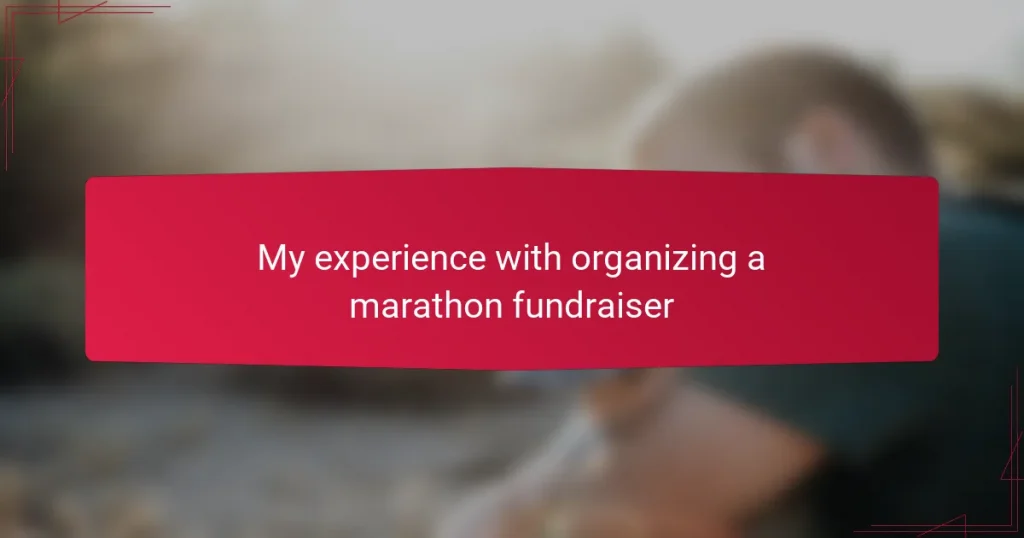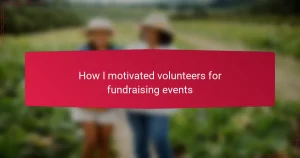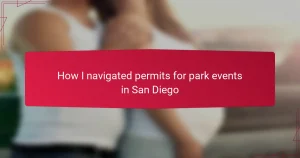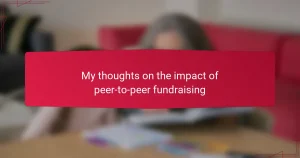Key takeaways
- San Diego family fundraising thrives on personal connections and community involvement, fostering a collective spirit in events.
- Effective planning involves setting realistic goals, maintaining clear communication, and being flexible with logistics to enhance participation.
- Engaging volunteers and families with age-appropriate roles and recognition keeps energy levels high and strengthens community bonds.
- Tracking progress and celebrating small milestones help maintain motivation and enthusiasm throughout the fundraising process.
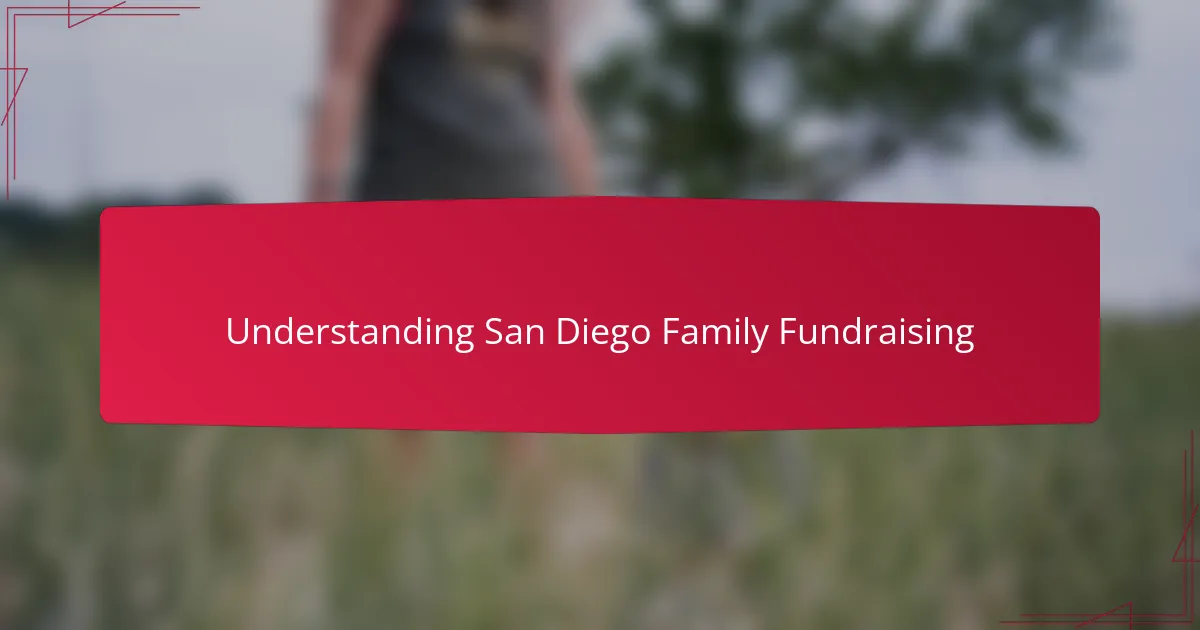
Understanding San Diego Family Fundraising
Organizing a marathon fundraiser in San Diego has given me a deep appreciation for how family-centered and community-driven fundraising truly is here. The city’s vibrant neighborhoods and supportive local groups make every event feel like a collective effort rather than just a series of individual contributions.
In my experience, understanding the unique dynamics of San Diego family fundraising meant recognizing the power of personal connections and shared goals. When my family joined hands with friends and neighbors, we witnessed firsthand how enthusiasm spread and donations increased, fueled by genuine relationships and common purpose.
- Local families often participate not just for the cause, but to strengthen community bonds.
- Events are designed to include all ages, fostering a family-friendly atmosphere.
- Collaboration with local businesses and schools is common, amplifying reach and impact.
- Storytelling about the cause resonates more deeply here, as people relate it to their own lives.
- Flexibility and creativity in fundraising approaches help engage diverse groups effectively.
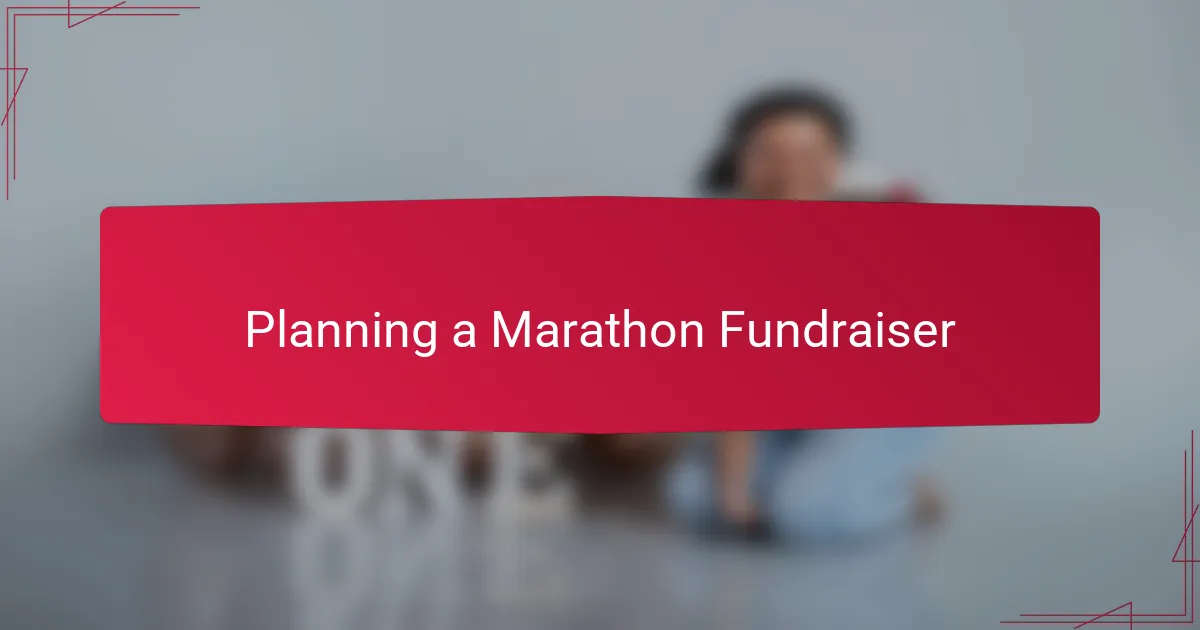
Planning a Marathon Fundraiser
Planning a marathon fundraiser requires meticulous attention to detail and a clear roadmap. When I first tackled this task, I quickly realized that breaking down the event into manageable steps made the whole process less daunting and more enjoyable. It wasn’t just about setting a date but synchronizing all the moving parts—from permits to volunteer coordination.
One of the most crucial elements I focused on was establishing a realistic budget and timeline early on. This approach saved me from last-minute scrambles and allowed room for unexpected challenges. Here’s how I structured the planning phase to keep everything on track:
- Secured necessary permits and insurance well in advance
- Created a detailed budget covering all expenses and potential income
- Recruited and trained volunteers, assigning clear roles
- Coordinated with local businesses and sponsors for support
- Planned the marathon route with safety and accessibility in mind
- Developed a marketing strategy targeting local families and running clubs
- Set up an online registration and donation platform for easy access
- Scheduled regular check-ins to monitor progress and adapt plans as needed
This checklist helped me stay organized and confident that every aspect was covered, turning a complex fundraiser into a rewarding community event.

Setting Realistic Fundraising Goals
Setting realistic fundraising goals felt like one of the biggest challenges at first. I remember wondering, how much can we genuinely raise without overwhelming our supporters or setting expectations too high? Striking the right balance was key—I wanted goals that inspired us but stayed achievable based on our community’s capacity.
From my experience, the best approach was to break the total target into smaller, incremental milestones. Celebrating those mini-wins kept the energy alive and motivated everyone to keep pushing forward. It also helped me adjust plans smoothly when some parts of the campaign needed an extra boost or when we exceeded certain benchmarks ahead of schedule.
I found that involving family members and local partners in setting these goals made all the difference. Their input gave me a more realistic picture of what was feasible—and it made the whole process more collaborative. After all, when everyone feels part of the goal-setting, it becomes a shared mission rather than just a number on a checklist.
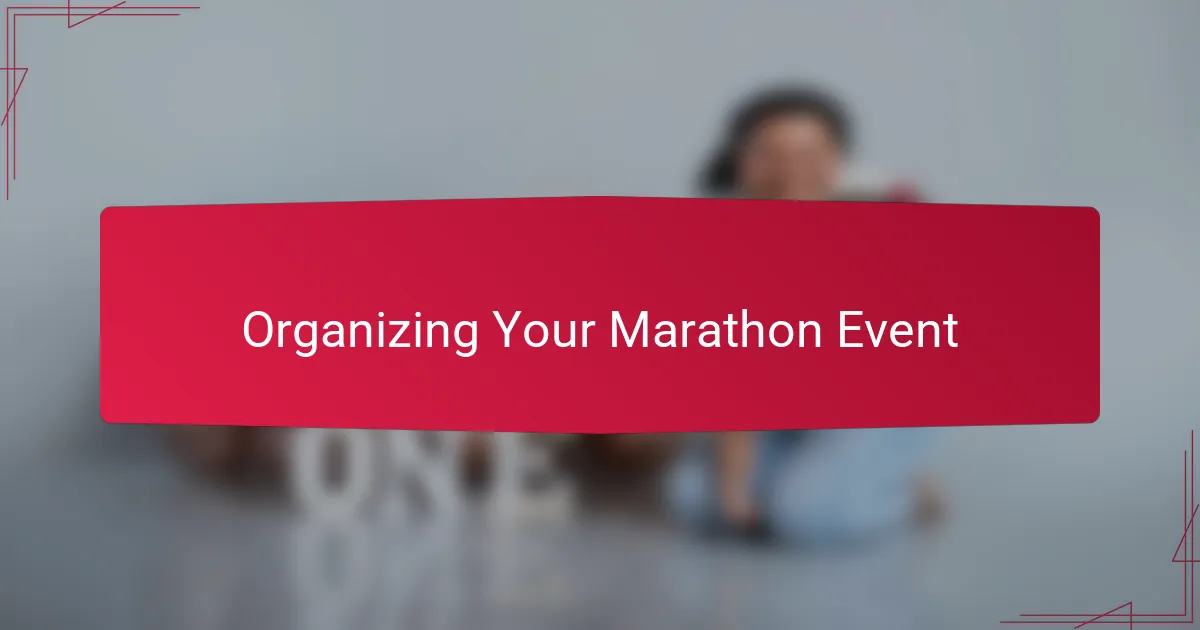
Organizing Your Marathon Event
One of the first things I learned when organizing the marathon event was how crucial it is to choose a route that’s both scenic and manageable for all ages. I asked myself, “Will this path inspire runners and walkers alike?” Picking familiar landmarks in San Diego not only motivated participants but also helped families feel connected to the cause as they trained together through their own neighborhoods.
Coordinating volunteers felt like assembling a puzzle where every piece mattered. I remember feeling a mix of excitement and nerves as I reached out to community groups, school clubs, and local businesses—each willing to bring their energy to the event. Assigning clear roles and keeping communication open made a huge difference in turning what initially seemed chaotic into a smooth, collaborative effort.
Lastly, I realized how vital timing is—not just the day of the marathon but every deadline leading up to it. Have you ever faced a last-minute scramble? I sure have. Setting regular check-ins kept me on track, helped me spot problems early, and reminded me that flexibility is just as important as structure when organizing an event of this scale.

Engaging Families and Volunteers
Getting families and volunteers involved was a game-changer in making the marathon fundraiser feel like a community celebration rather than just an event. I remember how the kids’ excitement about cheering and handing out water turned the atmosphere electric, reminding me of why I was doing this in the first place—bringing people together for a common cause.
To keep everyone engaged and motivated, I found it helpful to create clear roles and provide small incentives, which made the work feel rewarding and purposeful. Here’s what worked best for involving families and volunteers:
- Assign age-appropriate tasks to children and adults alike to ensure everyone can contribute meaningfully
- Host pre-event gatherings to build team spirit and explain the cause
- Recognize volunteers publicly during and after the event to boost morale
- Use social media to share stories and updates, keeping families connected even before race day
- Provide snacks and refreshments to keep energy levels high and maintain a friendly atmosphere

Overcoming Challenges in Fundraising
One of the biggest hurdles I faced was keeping everyone motivated throughout the months leading up to the marathon. At times, fundraising efforts slowed, and I could feel the team’s energy dip, which made me question if our goal was realistic. However, sharing personal stories about what the cause meant to me helped rekindle their enthusiasm and reminded us all why we started in the first place.
Managing the logistics while juggling fundraising demands was another challenge. Coordinating volunteers, securing permits, and tracking donations felt overwhelming, especially when unexpected issues popped up. Here are some practical strategies that helped me push through those obstacles:
- Set clear, achievable milestones to celebrate small wins and maintain momentum
- Regularly communicate with volunteers and donors to build a supportive community
- Use detailed spreadsheets or fundraising software to keep track of funds and tasks
- Prepare backup plans for permit or venue issues to avoid last-minute stress
- Share personal updates and stories to keep the emotional connection alive and strong

Reflecting on My Marathon Experience
Reflecting on my marathon experience, I realize how much planning and community support mattered. I was constantly balancing excitement with moments of doubt, especially as deadlines loomed. Yet, every challenge felt rewarding when I saw families come together for a common cause.
| Aspect | My Experience |
|---|---|
| Planning | Intensive but rewarding, involved community coordination and logistics |
| Emotional Journey | Stressful at times, but deeply fulfilling seeing family involvement |
| Fundraising Impact | Exceeded expectations, brought families closer through shared purpose |
| Community Engagement | High, many families volunteered and participated enthusiastically |
